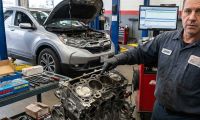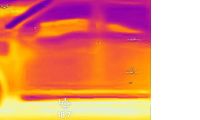NIO's “NIO Autonomous Driving (NAD)” brings the company's electric vehicles one step closer to Tesla. With the newly presented system, fully autonomous driving should become possible soon, as was reported at NIO Day 2020. For this, the start-up relies on NIO Aquila, which is the name for the first high-resolution camera (8 MP) that is installed in a vehicle. In comparison, Tesla uses a 1.2 MP camera.
The higher resolution and display enables the NIO ET7 to recognize objects and obstacles at a greater distance and to let the system react accordingly.
NIO underpins this with numbers, so the system is able to recognize vehicles at a distance of 687 meters; Tesla at 229 meters. Traffic cones would be seen at a distance of 262 meters (Tesla 87 meters) and people at a distance of 223 meters (Tesla 74 meters). Looking at these numbers, it can be seen that in fact an earlier reaction of the system seems plausible.
With regard to the NIO ET7's range, there is talk of over 500 km with one charge from the 70 kWh battery. With the 100 kWh battery, which is subject to a surcharge, a range of over 700 km is possible. With the 150 kWh battery even over 1,000 km range. Mind you in the NEDC cycle. The Stromer has a height of 1,505 mm, a total length of 5,098 mm and a wheelbase of 3,060 mm. The width is given as 1,987 mm.
Watch Full Specs of NIO ET7 in This Below Video Coverage from Torque News
Together with Innovusion, “Ultralong Range High Resolution LiDAR” sensors have been developed that work in a field of view of 120°, up to 500 meters away and have significantly better vision than the human eye. Obstacles that the camera misses are detected by the sensor from NIO and Innovusion. A total of 11 8MP cameras, a 1,550nm LiDAR sensor, five mmWaveRad, 12 USS and two GPS / IMU as well as one V2X and one ADMS sensor are installed in the NIO ET7.
Some of the cameras can be found on the roof of the electric limousine - each in a "watchtower position" - to enable the largest possible field of vision. "Blind spots" are thus better avoided than with cameras that are installed on the vehicle's B-pillar (Tesla), for example. In addition, there is a centrally centered camera, which keeps the view to the front in view and, in total, contributes to the 120° field of view of the NIO system.

Up to eight gigabytes of data can be processed per second by the NIO Aquila system, as NIO indicated during NIO Day 2020. However, this is only possible because the ET7 is a computer on wheels. "Adam:" the NVIDIA supercomputer, plays a crucial role here. In the case of NIO, it is an "Ultrahigh Speed Backbone Network," which allows the data collected from the vehicle to be processed.

"Adam" is made up of four NVIDIA Drive Orin SoCs, 48 A78 CPU cores, 256 3rd generation tensor cores as well as 8,096 CUDA cores and 68 trillion transistors. Or to put it another way: Adam has 1,016 TOPS (Total Operations per Second) or, to put it another way, a comparable performance of seven Tesla autopilot systems.
Armen Hareyan is the founder and the Editor in Chief of Torque News. He founded TorqueNews.com in 2010, which since then has been publishing expert news and analysis about the automotive industry. He can be reached at Torque News Twitter, Facebok, Linkedin and Youtube.
Reference: ElectroAuto.











